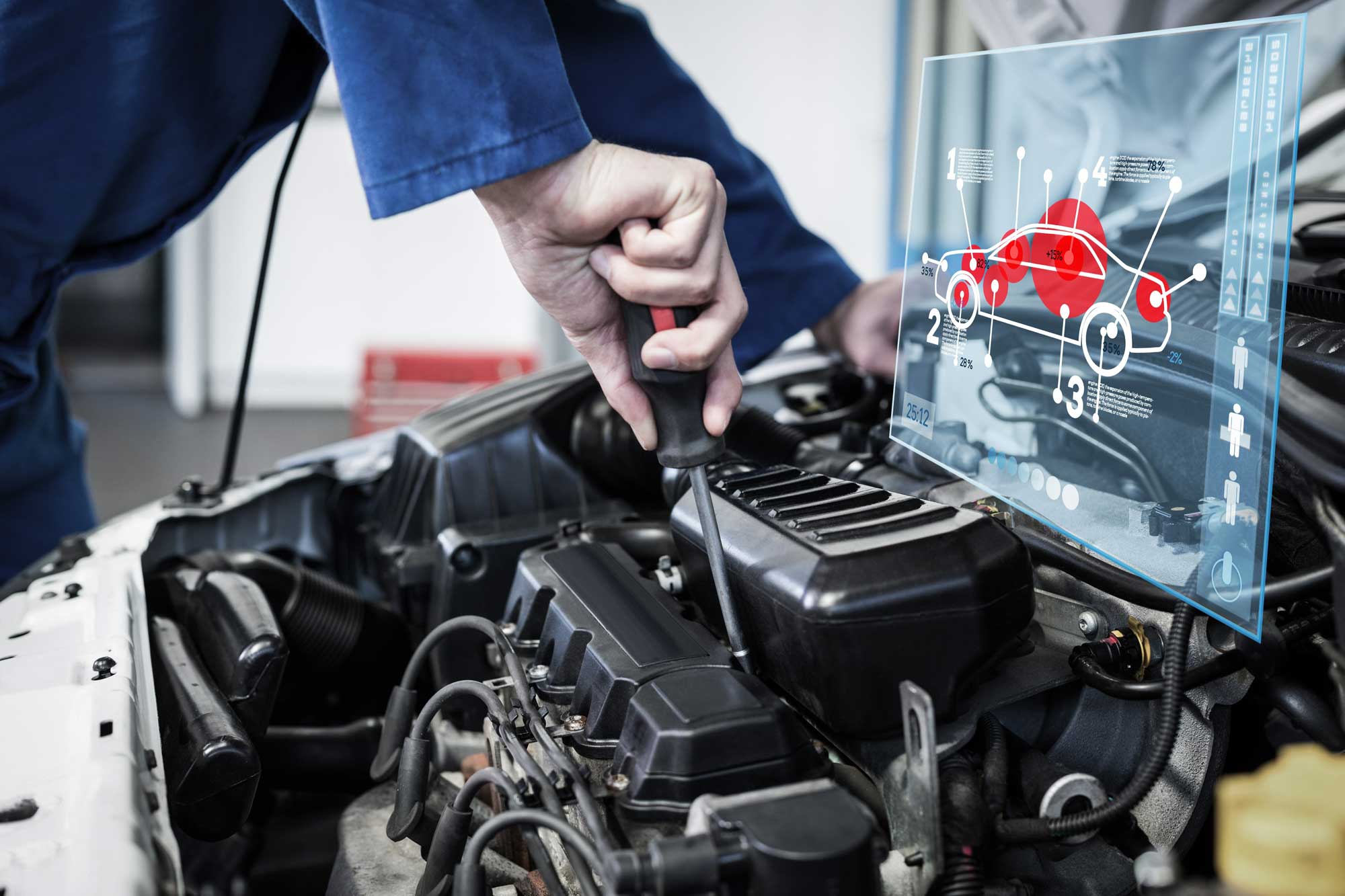All Categories
Featured
The check engine light (CEL) is one of the most identifiable control panel indicators, however it often strikes fear or confusion in chauffeurs. While it's very easy to panic when the light illuminates, understanding its function and knowing just how to respond can help you take the appropriate actions to resolve possible problems. This novice's guide breaks down what the check engine light ways, usual causes, and just how to handle it.
What Is the Inspect Engine Light? The check engine light becomes part of your cars and truck's onboard diagnostics (OBD) system, made to keep track of engine performance and exhausts. When the system finds a problem, the CEL lights up to inform you. The light might appear as a steady radiance or a blinking signal, each carrying various levels of urgency.
Strong Light: Indicates a less immediate concern, yet it still calls for focus. Blinking Light: Signals a much more major issue, such as a misfire, which could harm your engine or catalytic converter if overlooked. Typical Reasons For the Inspect Engine Light. The CEL can activate for a variety of factors, varying from small problems to significant repair work. Here are several of one of the most typical offenders:
Loose or Faulty Gas Cap:
A loosened gas cap can cause fuel vapors to escape, setting off the CEL. This is one of the most convenient and least pricey solutions-- tighten or replace the cap. Faulty Oxygen Sensing Unit:
![]()
The oxygen sensing unit keeps track of the air-to-fuel proportion in your engine. A malfunctioning sensing unit can reduce gas performance and boost discharges. Malfunctioning Glow Plugs or Ignition Coils:
Worn-out trigger coils or plugs can cause engine misfires. Normal tune-ups aid prevent this concern. Catalytic Converter Issues:
The catalytic converter minimizes unsafe exhausts. Troubles with this component can be costly and often result from ignoring various other issues. Mass Air Movement Sensor Troubles:
The mass air flow (MAF) sensor determines the air getting in the engine. A damaged or dirty MAF sensor can affect performance and fuel economy. When the Examine Engine Light Comes On, what to Do. Don't Panic:
If the light is stable, it's safe to drive to a repair shop. If it's flashing, reduce speed and stay clear of difficult velocity; pull over and look for immediate assistance. Examine for Obvious Issues:
Tighten the gas cap, as this is a simple and typical fix. Look for indications of serious difficulty, such as smoke or unusual engine sounds. Make Use Of an OBD-II Scanner:
An OBD-II scanner reviews the difficulty codes stored in your vehicle's computer. Many auto components stores use complimentary code scanning solutions. Get In Touch With an Expert Technician:
![]()
If you can't solve the problem yourself, take your car to a trusted auto mechanic. Provide the difficulty code for a much faster and extra exact diagnosis. Preventative Procedures. Normal upkeep is essential to staying clear of CEL problems. Below's exactly how to stay in advance:
Schedule Regular Tune-Ups: Replace stimulate plugs and inspect ignition parts frequently. Keep Fluids Completed: Make certain correct levels of oil, coolant, and other liquids. Usage Top Quality Fuel: Poor-quality gasoline can cause sensor and exhausts problems. Verdict. The check engine light does not have to provide stress and anxiety. By recognizing its purpose and recognizing just how to resolve it, you can maintain your automobile running efficiently and stay clear of pricey fixings. Deal with the CEL as a handy device rather than a problem, and it will certainly guide you to keeping your car's health efficiently.
What Is the Inspect Engine Light? The check engine light becomes part of your cars and truck's onboard diagnostics (OBD) system, made to keep track of engine performance and exhausts. When the system finds a problem, the CEL lights up to inform you. The light might appear as a steady radiance or a blinking signal, each carrying various levels of urgency.
Strong Light: Indicates a less immediate concern, yet it still calls for focus. Blinking Light: Signals a much more major issue, such as a misfire, which could harm your engine or catalytic converter if overlooked. Typical Reasons For the Inspect Engine Light. The CEL can activate for a variety of factors, varying from small problems to significant repair work. Here are several of one of the most typical offenders:
Loose or Faulty Gas Cap:
A loosened gas cap can cause fuel vapors to escape, setting off the CEL. This is one of the most convenient and least pricey solutions-- tighten or replace the cap. Faulty Oxygen Sensing Unit:

The oxygen sensing unit keeps track of the air-to-fuel proportion in your engine. A malfunctioning sensing unit can reduce gas performance and boost discharges. Malfunctioning Glow Plugs or Ignition Coils:
Worn-out trigger coils or plugs can cause engine misfires. Normal tune-ups aid prevent this concern. Catalytic Converter Issues:
The catalytic converter minimizes unsafe exhausts. Troubles with this component can be costly and often result from ignoring various other issues. Mass Air Movement Sensor Troubles:
The mass air flow (MAF) sensor determines the air getting in the engine. A damaged or dirty MAF sensor can affect performance and fuel economy. When the Examine Engine Light Comes On, what to Do. Don't Panic:
If the light is stable, it's safe to drive to a repair shop. If it's flashing, reduce speed and stay clear of difficult velocity; pull over and look for immediate assistance. Examine for Obvious Issues:
Tighten the gas cap, as this is a simple and typical fix. Look for indications of serious difficulty, such as smoke or unusual engine sounds. Make Use Of an OBD-II Scanner:
An OBD-II scanner reviews the difficulty codes stored in your vehicle's computer. Many auto components stores use complimentary code scanning solutions. Get In Touch With an Expert Technician:

If you can't solve the problem yourself, take your car to a trusted auto mechanic. Provide the difficulty code for a much faster and extra exact diagnosis. Preventative Procedures. Normal upkeep is essential to staying clear of CEL problems. Below's exactly how to stay in advance:
Schedule Regular Tune-Ups: Replace stimulate plugs and inspect ignition parts frequently. Keep Fluids Completed: Make certain correct levels of oil, coolant, and other liquids. Usage Top Quality Fuel: Poor-quality gasoline can cause sensor and exhausts problems. Verdict. The check engine light does not have to provide stress and anxiety. By recognizing its purpose and recognizing just how to resolve it, you can maintain your automobile running efficiently and stay clear of pricey fixings. Deal with the CEL as a handy device rather than a problem, and it will certainly guide you to keeping your car's health efficiently.
Latest Posts
Include Convenience and Character to Your Home with Area Rugs
Published Apr 22, 25
1 min read
Montclare Auto Repair: The Trusted Choice for Expert Brake & Engine Fixes
Published Apr 22, 25
2 min read
Teenager Freedom Account: A Smart Start to Financial Self-reliance
Published Apr 22, 25
1 min read
More
Latest Posts
Include Convenience and Character to Your Home with Area Rugs
Published Apr 22, 25
1 min read
Montclare Auto Repair: The Trusted Choice for Expert Brake & Engine Fixes
Published Apr 22, 25
2 min read
Teenager Freedom Account: A Smart Start to Financial Self-reliance
Published Apr 22, 25
1 min read